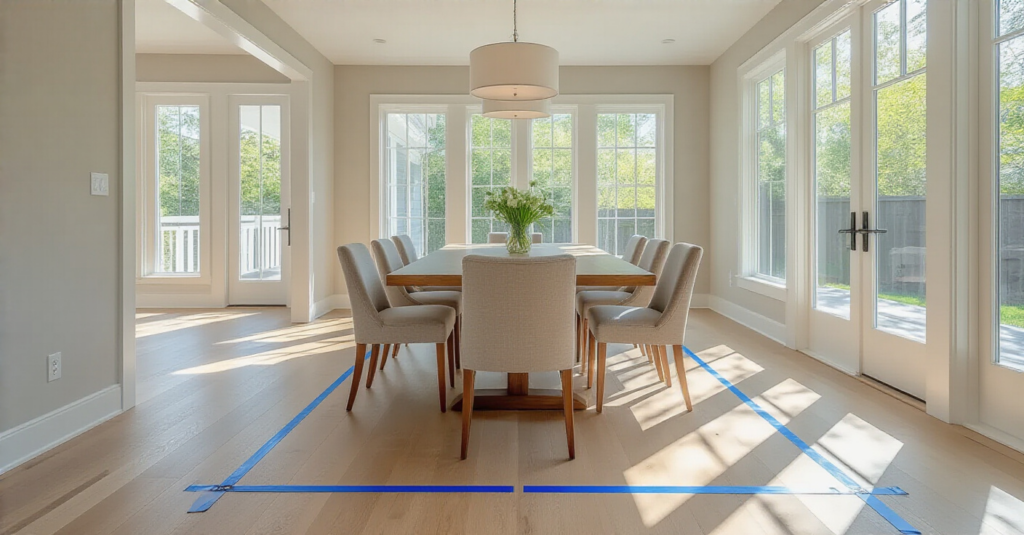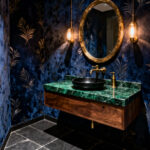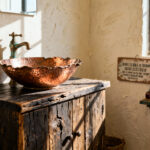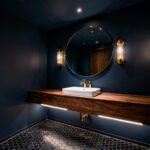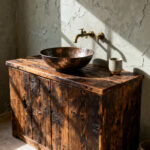Picture this: You’re standing in a dining room with beautiful, deep-set windows and original wavy glass. The afternoon light is streaming in, illuminating dust motes dancing in the air. This room has seen a century of family dinners, arguments, and holiday toasts. Now, it’s your turn to be its steward. The central question isn’t just “What table should I buy?” but “What piece will become the new heart of this historic home?” It’s a decision that will shape countless memories for years to come.
You know what people always ask me? They want to know the “best” table. But “best” is a trap. The real story isn’t about chasing trends; it’s about understanding the deep, practical truths of how a table functions in a space and in your life. Most of what you read online is noise—corporate speak trying to sell you something today. What you really need are the timeless principles that separate a regrettable purchase from a cherished heirloom. I’m here to give you the shortcuts and call out the nonsense, so you can make a choice with confidence.
Laying the Foundation: Strategic Planning for Your Dining Table (Part 1)
Before you even think about looking at a single piece of furniture, we need to talk strategy. This is the unglamorous part that everyone wants to skip, and it’s precisely why so many people end up with a dining room that feels awkward, cramped, or just plain wrong. This section is your blueprint for success.
1. Calculate Room Dimensions for Optimal Table Sizing
Okay, this is the one step you absolutely, positively cannot screw up. Get this wrong, and nothing else matters. The most beautiful, handcrafted table in the world will feel like a monstrous mistake if you can’t comfortably walk around it or pull out your chair without hitting a wall. You need a minimum of 36 inches—and I prefer 42 inches—of “breathing room” around your table. That’s the space from the edge of the table to the nearest wall or piece of furniture like a sideboard.
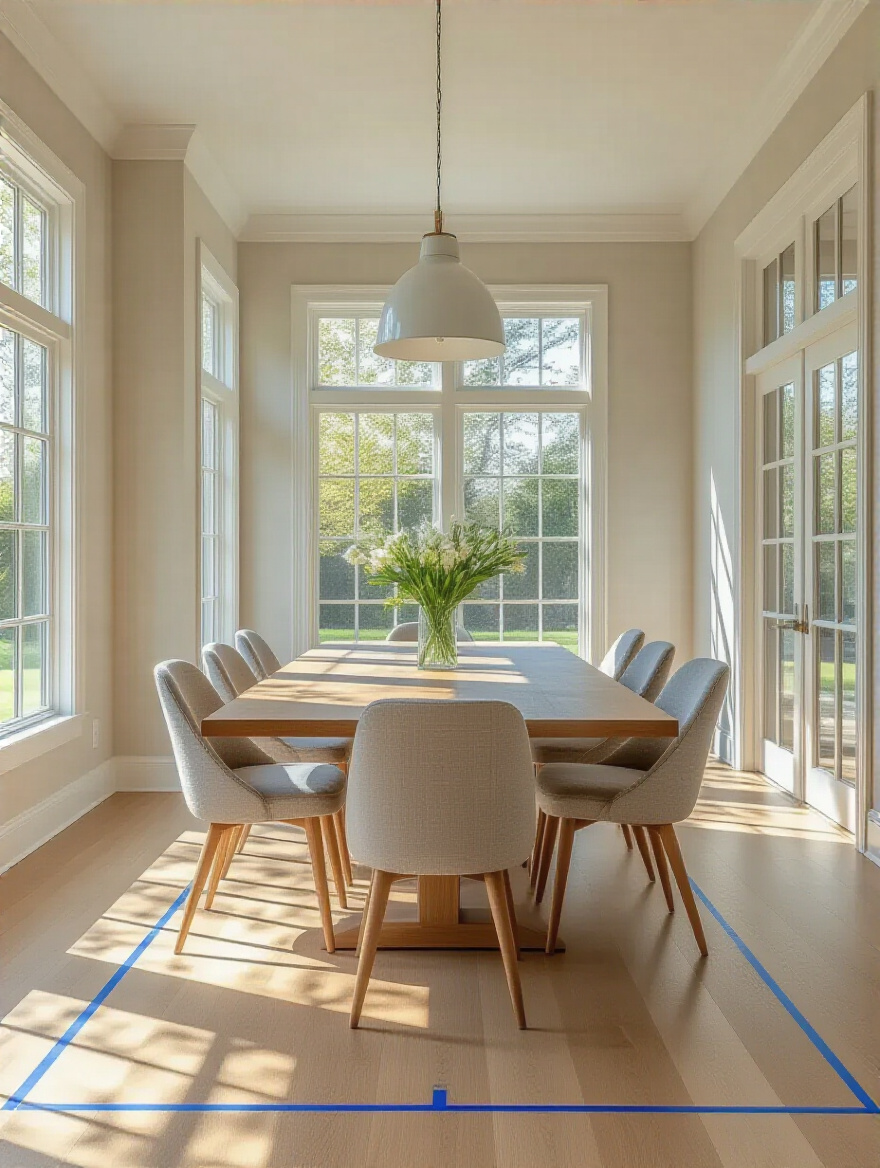
I once had a client who fell in love with a magnificent 10-foot-long trestle table for his Tudor revival home. He measured the room, and it technically fit. But he didn’t account for this circulation space. The result? Once the chairs were in, nobody could get to the far side of the table without shuffling sideways like a crab. It was a $5,000 lesson in the importance of clearance. So get out your tape measure and blue painter’s tape, and mark the potential table size on your floor. Live with it for a day. Walk around it. This simple trick is the single best shortcut to avoiding a colossal mistake.
With our non-negotiable measurements in hand, let’s talk about who will actually be using this table.
2. Determine Seating Capacity Requirements Accurately
Everyone gets this wrong by focusing on one extreme or the other. They either buy a tiny table for their daily needs and then panic during the holidays, or they buy a massive banquet table that feels empty and cavernous with only two people. The key is to be brutally honest with yourself: What is your 80% use case? Is it nightly dinners with your family of four? Or is it bi-weekly dinner parties for eight? Plan for that, not the once-a-year Thanksgiving feast.
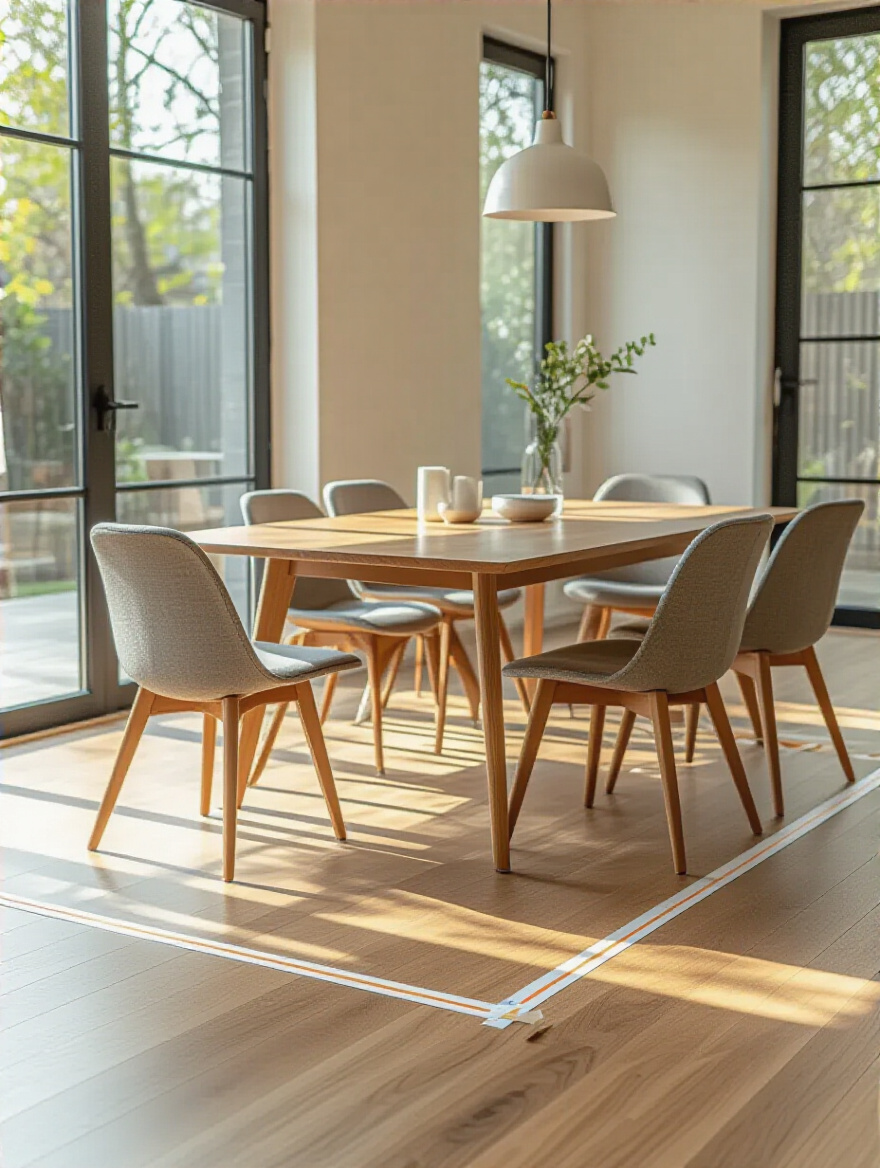
A good rule of thumb is to allow 24 inches of width per person. Anything less and your guests will be bumping elbows. This is where extendable tables are a godsend for older homes, which often have dining rooms that aren’t vast, open spaces. A classic pedestal table with a leaf, for example, can be perfect for four on a Tuesday and comfortably seat eight on a Saturday. Just make sure you measure the room with the table fully extended before you buy it, so you don’t repeat the mistake my other client made.
Now that we know the practical size and seating, we can finally start thinking about how this piece will look and feel within the historic context of your home.
3. Define Your Dining Room’s Existing Aesthetic and Flow
You wouldn’t put sleek, chrome furniture in a rustic 18th-century farmhouse, would you? The character of your home gives you a set of guiding principles. Look at your architectural details: the millwork, the fireplace, the window casings. Is it formal Georgian? Ornate Victorian? Simple Arts and Crafts? Your table should be in conversation with these elements, not shouting over them. This doesn’t mean it has to be a stuffy, period-perfect replica, but it does mean it needs to respect the home’s soul.
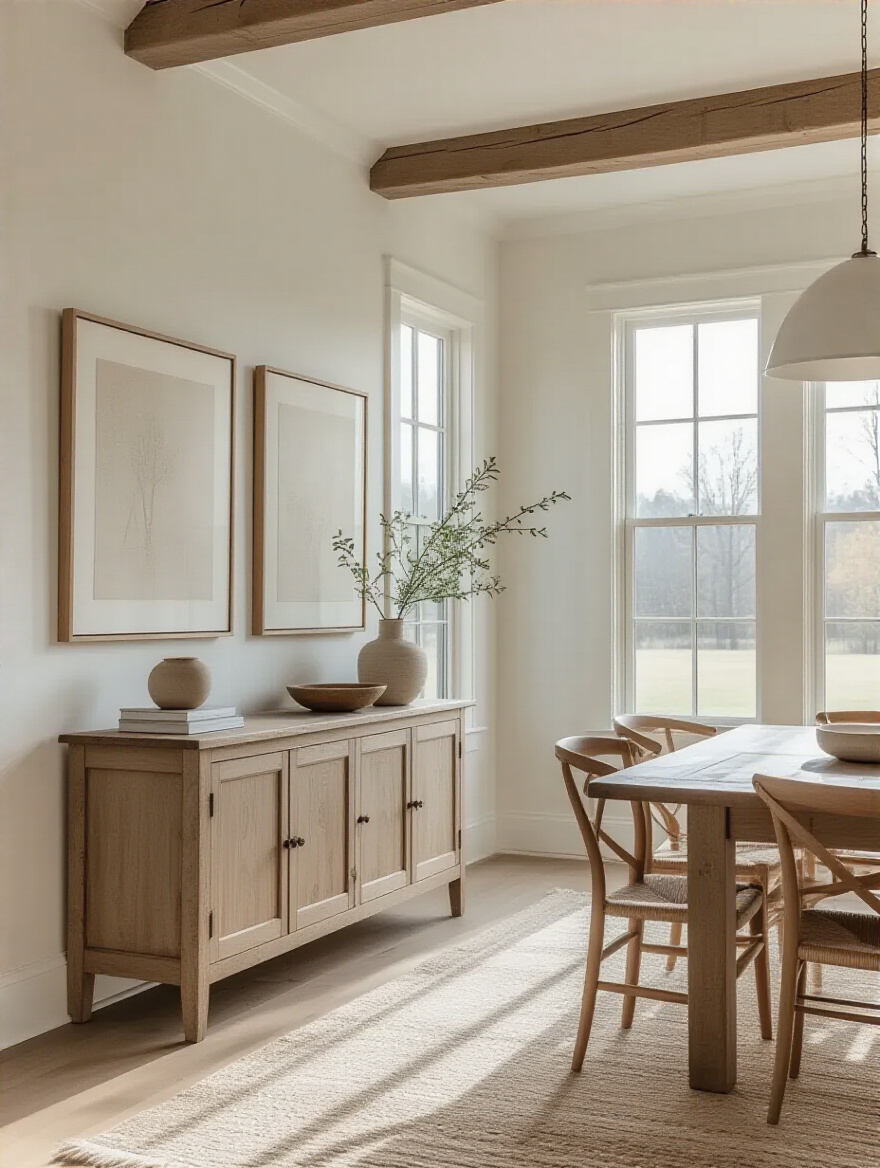
A client of mine has a gorgeous Craftsman home, full of dark oak and straight lines. He was considering a very delicate, rococo-style table. I gently steered him toward a solid, quarter-sawn oak trestle table instead. It wasn’t an antique, but it shared the same DNA as the house: honesty, simplicity, and a celebration of joinery. The result feels inevitable, like it was always meant to be there. Walk through your house, take pictures, and define its character in three words (e.g., “Grounded, Artisanal, Warm”). Let those words be your guide.
Understanding the room’s character is about more than just style; it’s about acknowledging its true purpose.
4. Prioritize Functional Needs Over Purely Visual Appeal
Here’s a hard truth: A beautiful table that doesn’t fit your life is just an expensive sculpture. I’ve seen it a hundred times. A family with three young kids buys a stunning, unsealed reclaimed wood table because they love the rustic look. Within six months, it’s covered in grape juice stains and marker scribbles they can never get out. Their gorgeous table becomes a source of constant anxiety. Function must come before form.
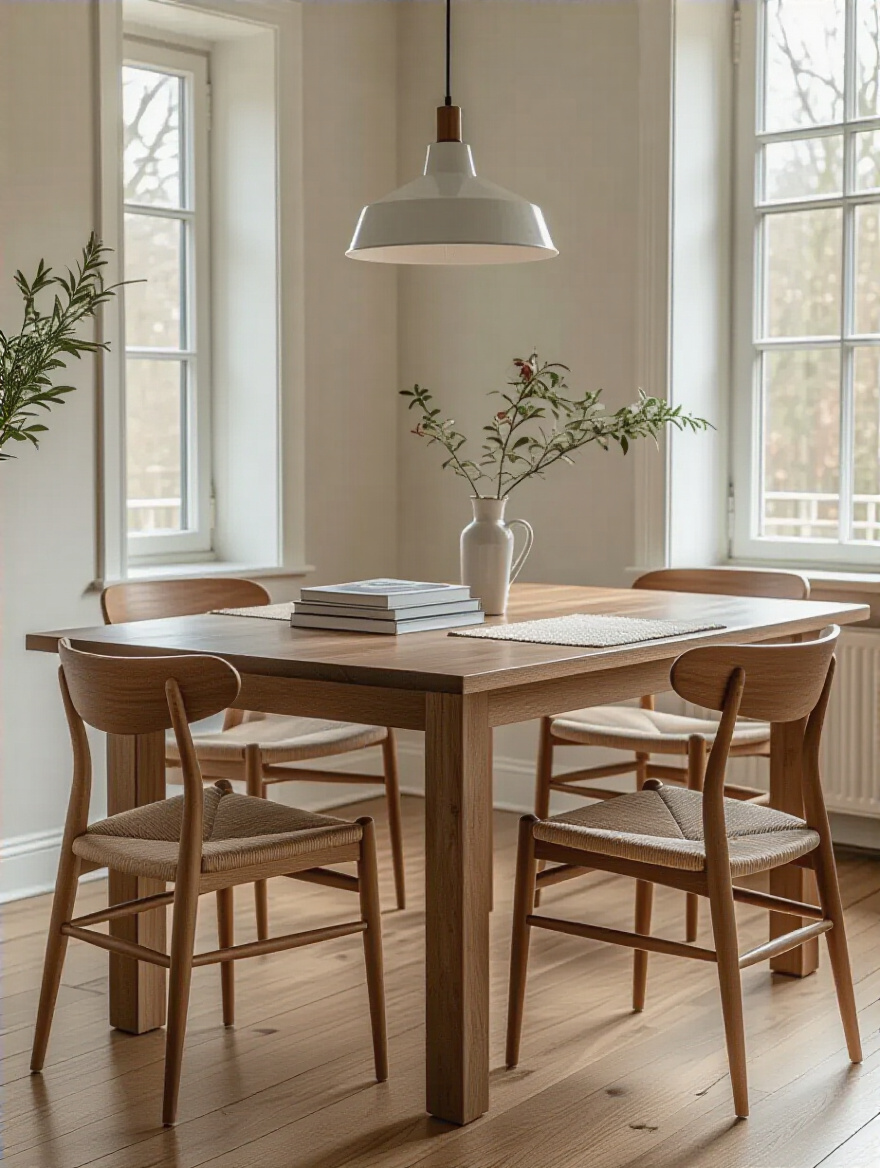
So ask yourself the tough questions. Is this table also a homework station? A home office? A craft zone? If so, you need a workhorse. You need a durable finish that can be wiped down easily, like a good polyurethane on solid wood. If you only use your dining room for formal occasions, then you can indulge in something more delicate, like a fine veneer or a marble top. But be honest about your reality. There is no shame in choosing a practical piece; in fact, it’s the smartest choice you can make.
With the functional requirements locked in, we can now address the often-uncomfortable but essential topic of money.
Laying the Foundation: Strategic Planning for Your Dining Table (Part 2)
We’ve covered the physical space and the practical use; now it’s time for the final piece of our foundation—the budget. Don’t gloss over this. A clear budget is a tool of empowerment, not restriction. It focuses your search and saves you from a world of financial regret.
5. Establish a Realistic Budget for Table and Accessories
Let’s talk about the BS everyone believes here. People think a budget limits their options. Wrong. A budget clarifies your options and protects you from making an emotional purchase you can’t afford. It forces you to prioritize quality where it matters. Here’s the shortcut: Don’t just budget for the table. That’s a rookie mistake. You need to budget for the entire dining “suite”—the table, the chairs, and maybe even a new light fixture or rug.
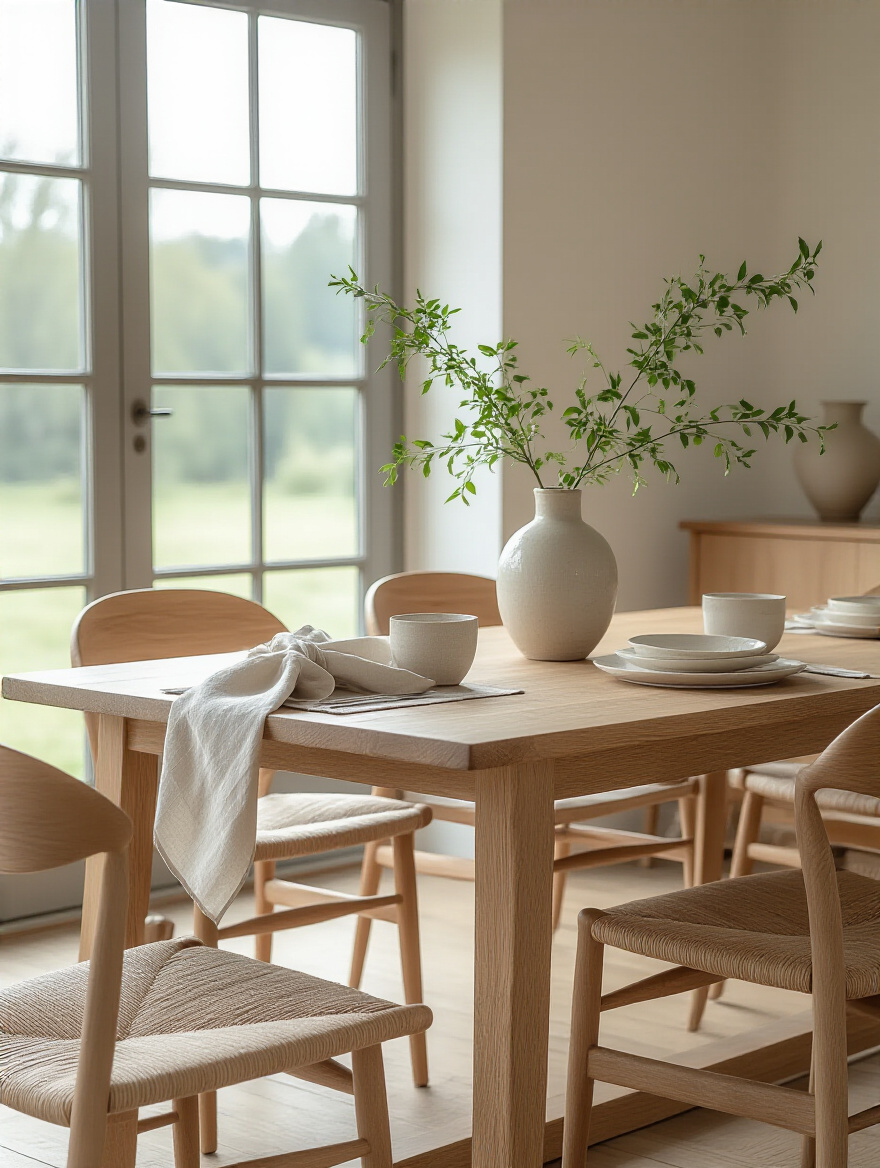
A common pitfall is spending 100% of the budget on a magnificent table, leaving nothing for chairs. I had clients who did this and ended up using folding chairs for a year until they could save up again. It completely undermined the beauty of the table. A good rule of thumb is to allocate about 60% of your total budget to the table and 40% to the chairs. That way, you’re looking at the complete picture from day one and can find a beautiful, cohesive set that works within your financial reality.
With a solid plan in place, we’re ready to move into the exciting part: actually choosing your table.
Making the Perfect Choice: Selecting and Setting Up Your Ideal Table (Part 1)
Now the fun begins. Armed with your measurements, functional needs, aesthetic guide, and budget, you can start looking at actual tables. This section is about making the tangible choice—evaluating the materials, shapes, and features that will turn your vision into a reality.
6. Evaluate Table Material Durability and Maintenance Requirements
The material is the soul of the table. But not all materials are created equal. Let’s start with wood. “Solid wood” is a marketing term. A solid pine table is soft and will dent if you look at it too hard. A solid oak, maple, or walnut table is a durable investment that can be refinished for generations. Ask what kind of wood it is. Then there are veneers, where a thin layer of beautiful wood is applied over a stable core like MDF. High-quality veneers can be stunning and more stable than solid wood in some climates, but they can’t be sanded down and refinished repeatedly.
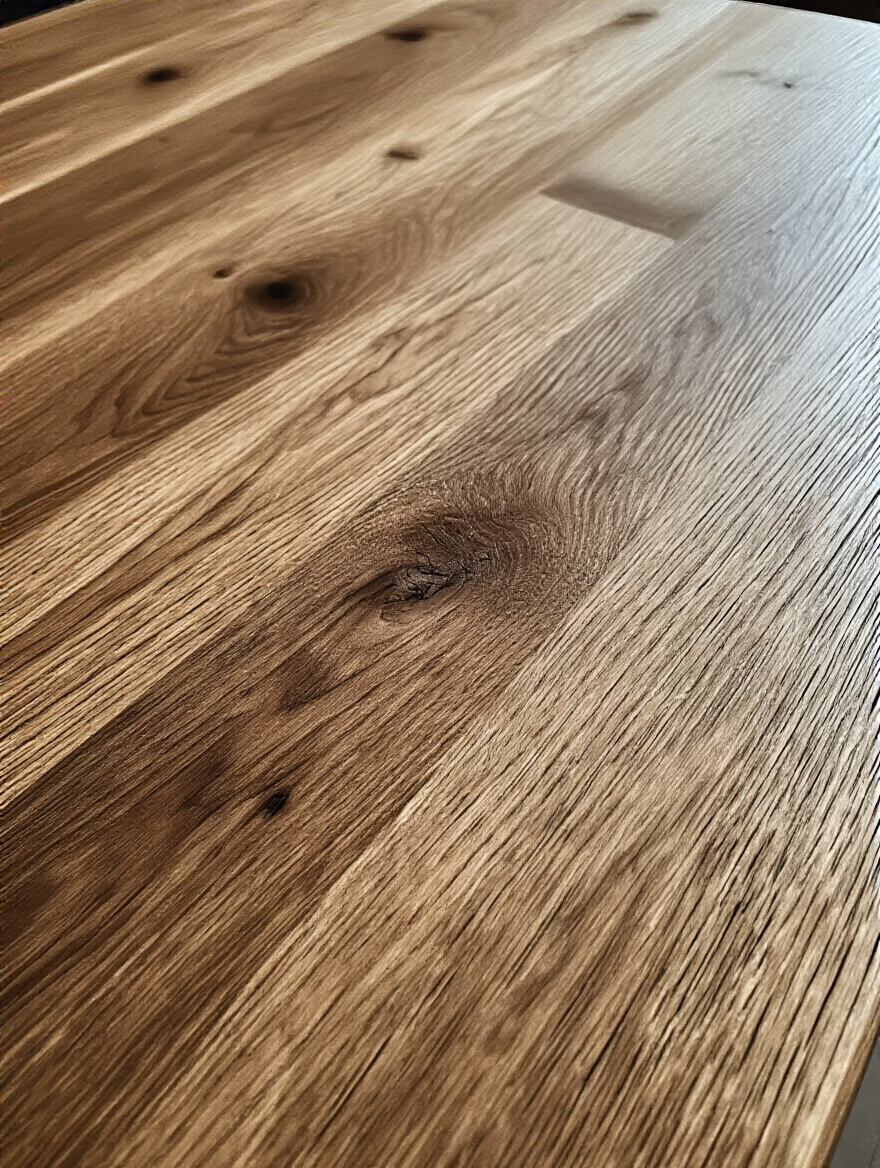
My advice? For a home that sees real life, you can’t beat solid oak with a good, protective finish. It has a beautiful grain that’s at home in almost any historic setting and it can take a beating. If you have kids, forget about softwoods and be very cautious with delicate veneers or unsealed finishes. Marble is gorgeous, but it etches and stains if you so much as splash a lemon wedge on it. Be realistic about the level of care you’re willing to provide. The right material is one that brings you joy, not stress.
The material informs the shape, and the shape itself is a critical choice for both social dynamics and movement.
7. Choose the Best Table Shape to Optimize Flow and Intimacy
The shape of your table has a profound impact on conversation. There’s a reason for the legend of King Arthur and the Round Table—a round shape creates a sense of equality and encourages a single, flowing conversation. It’s incredibly intimate and fantastic for smaller spaces or square rooms, as it has no sharp corners to impede traffic. It visually softens a room and invites connection.
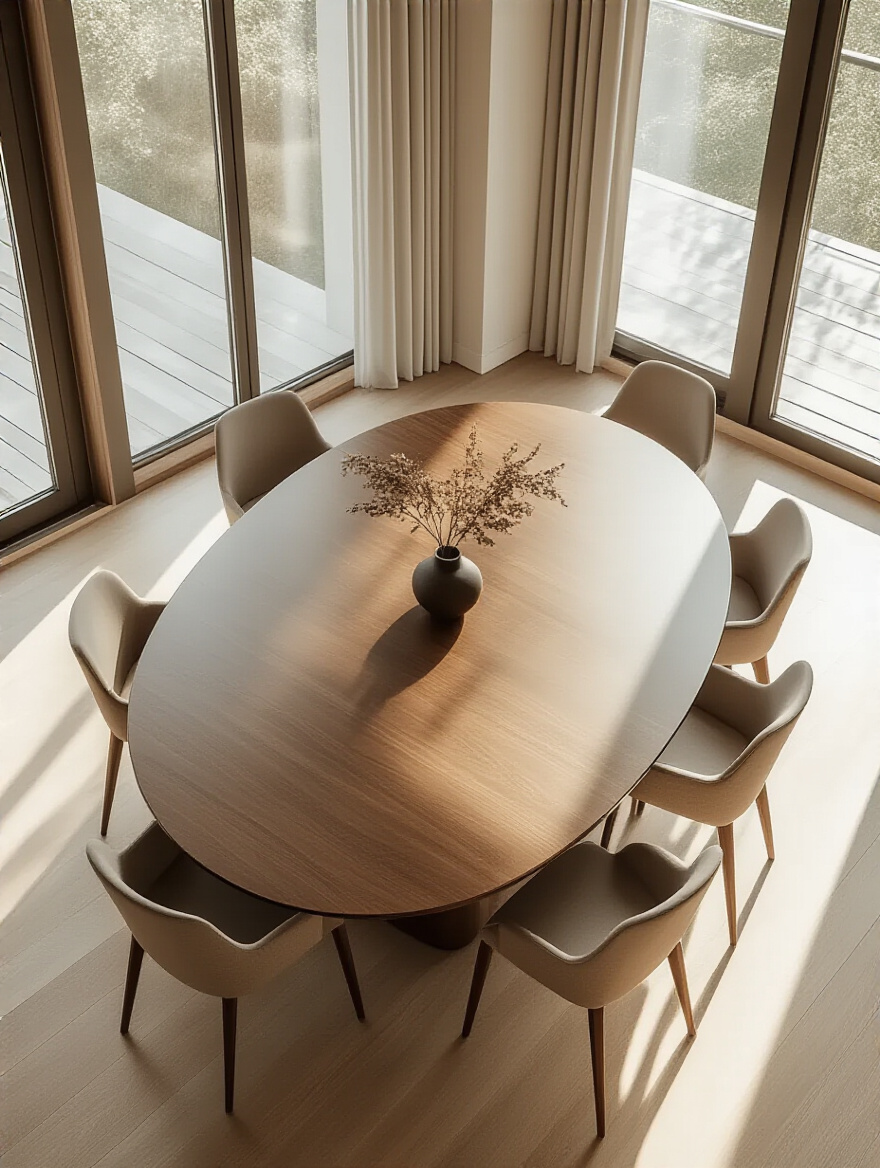
Rectangular tables are the classic choice for a reason. They fill a long room beautifully and are unmatched for seating a large number of people. However, they can sometimes feel formal and can isolate people at the ends of the table from each other. An oval table is often the perfect compromise. It gives you the length of a rectangle but with the softened corners and more intimate feel of a round table, making it an excellent and versatile choice for many historic dining rooms. Again, use your painter’s tape to mock up the shapes on your floor. See how it feels to walk around a rectangle versus an oval.
For many older homes with finite space, the ability to adapt your table size is a game-changer.
8. Investigate Extension Mechanisms for Flexible Seating Needs
If you’re considering an extendable table—and in an older home, you probably should be—you need to become an expert in leaves. Not all extension mechanisms are the same. A butterfly leaf, which folds and stores within the table itself, is the pinnacle of convenience. You never have to go hunting in a closet for a heavy, cumbersome leaf right before guests arrive. Traditional tables often have separate leaves that you have to store, which can be a hassle and risk damage.
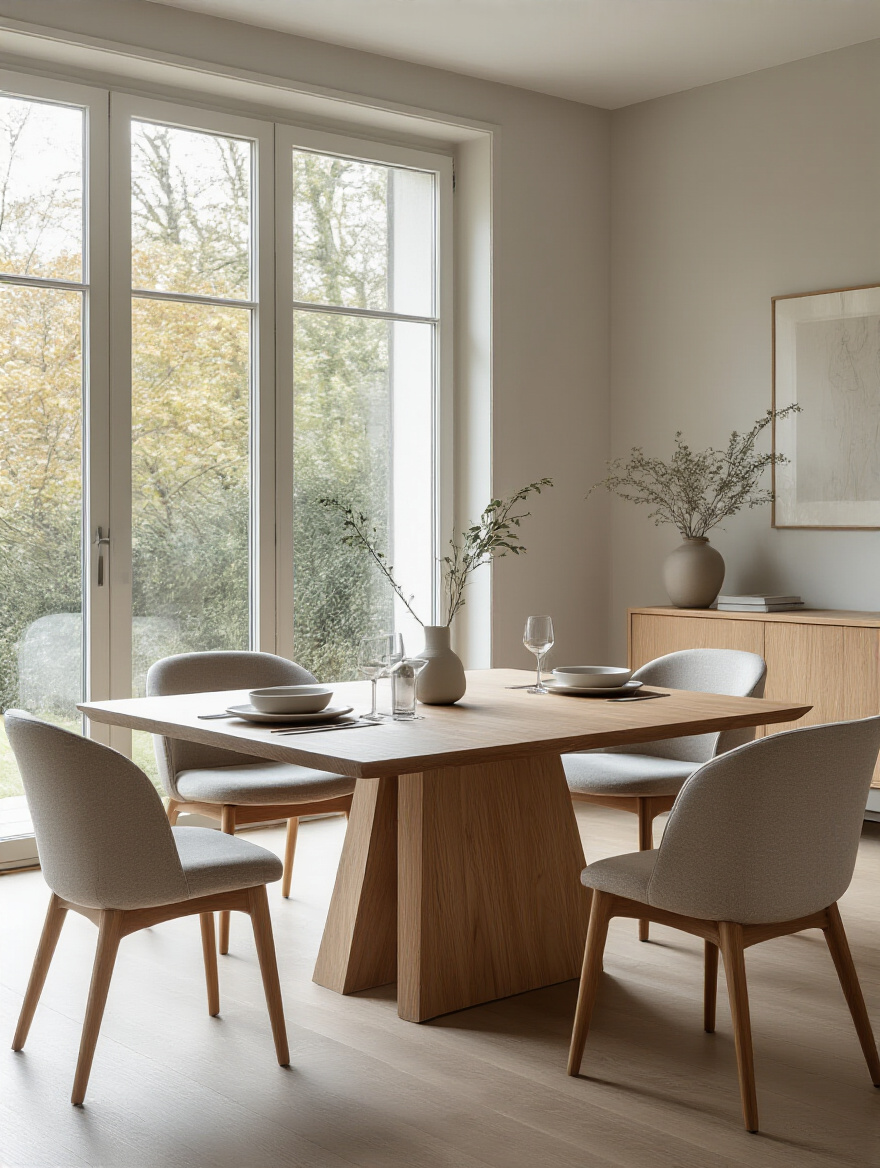
When you’re in the showroom, don’t just look at the table. Operate it. Try extending it yourself. Is the mechanism smooth and easy to use, or is it a clunky, two-person job? A cheap gear system will wobble and fail over time. A well-made one will glide effortlessly. I confess, I used to think this was a minor detail. Then I helped my parents host a dinner party and spent 20 minutes wrestling with their cheap, sticky extension mechanism. Now, I always tell clients that the quality of the extension is as important as the wood it’s made from.
Of course, a table is only half the equation. It’s nothing without the right companions.
9. Select Chair Styles and Sizes That Complement Your Table and Space
Mismatched chairs are a huge pet peeve of mine. I’m not talking about an intentionally curated eclectic look, but chairs that are simply the wrong size or proportion for the table. Here’s the critical shortcut you need to know: there should be about 10 to 12 inches of space between the top of the chair seat and the top of the table. Any less, and your legs will be crammed; any more, and you’ll feel like a child at the grown-ups’ table.
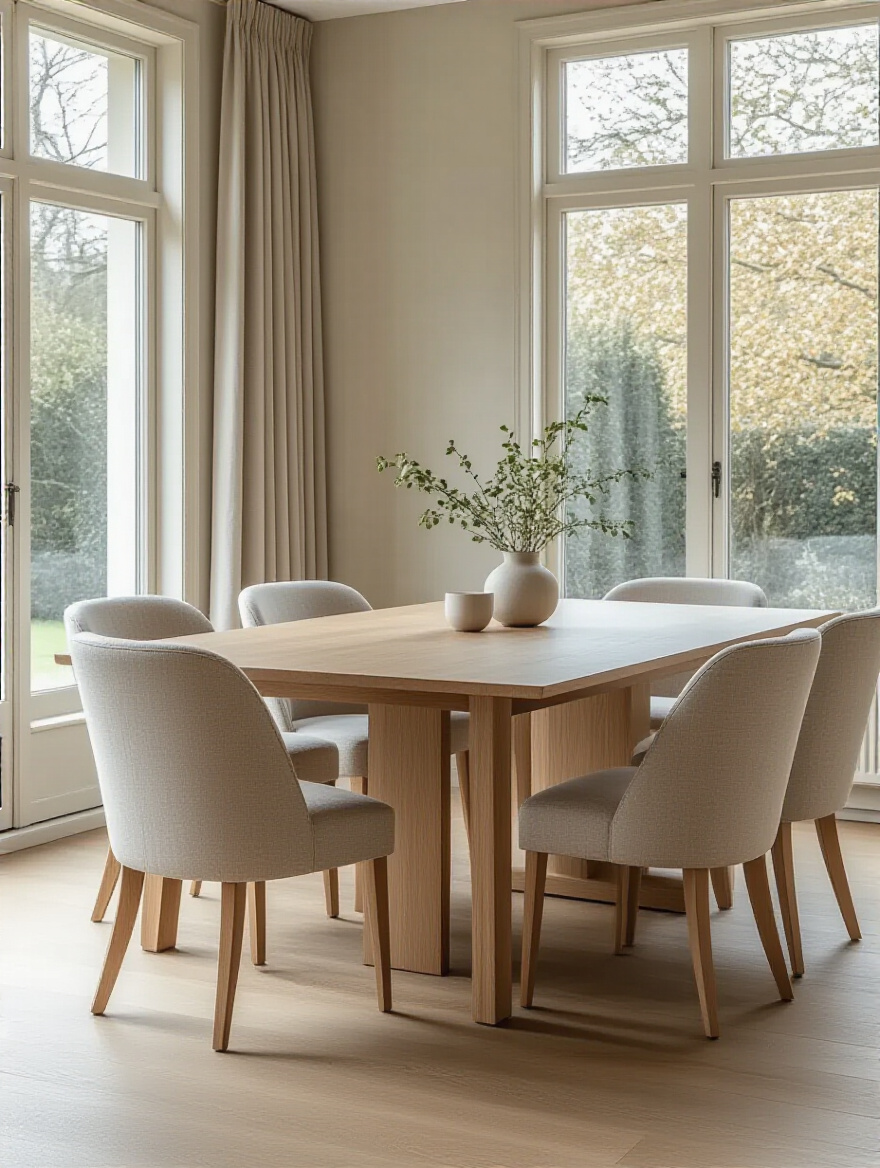
Then there’s the width. Before you buy eight chairs for your new table, place two of them side-by-side and see how much room they actually take up. Chairs with arms take up significantly more space. A common mistake is buying chairs that are too bulky, making the space feel crowded and preventing them from tucking neatly under the table. When it comes to style, the chairs don’t have to match the table perfectly—in fact, a little contrast can be nice—but they should share a common language in terms of scale, material, or historical period.
We’re getting closer to the final decision, but a few more crucial measurements will ensure perfect comfort.
Making the Perfect Choice: Selecting and Setting Up Your Ideal Table (Part 2)
We’ve covered the big choices of material, shape, and style. Now we need to refine the details—the ergonomics and the practical setup. These small adjustments are what elevate a dining space from simply looking good to feeling truly comfortable and secure.
10. Ensure Proper Table Height for Comfortable Dining Experience
This seems obvious, but you’d be surprised how often it’s overlooked. Standard table height is around 29 to 30 inches. However, “standard” can vary, and if you pair a 28-inch-high table with tall chairs, you’ll have a problem. The 10-12 inch rule between the chair seat and tabletop is your guiding star, but there’s another measurement that’s just as important: the apron. The apron is the wooden panel that connects the legs to the tabletop.
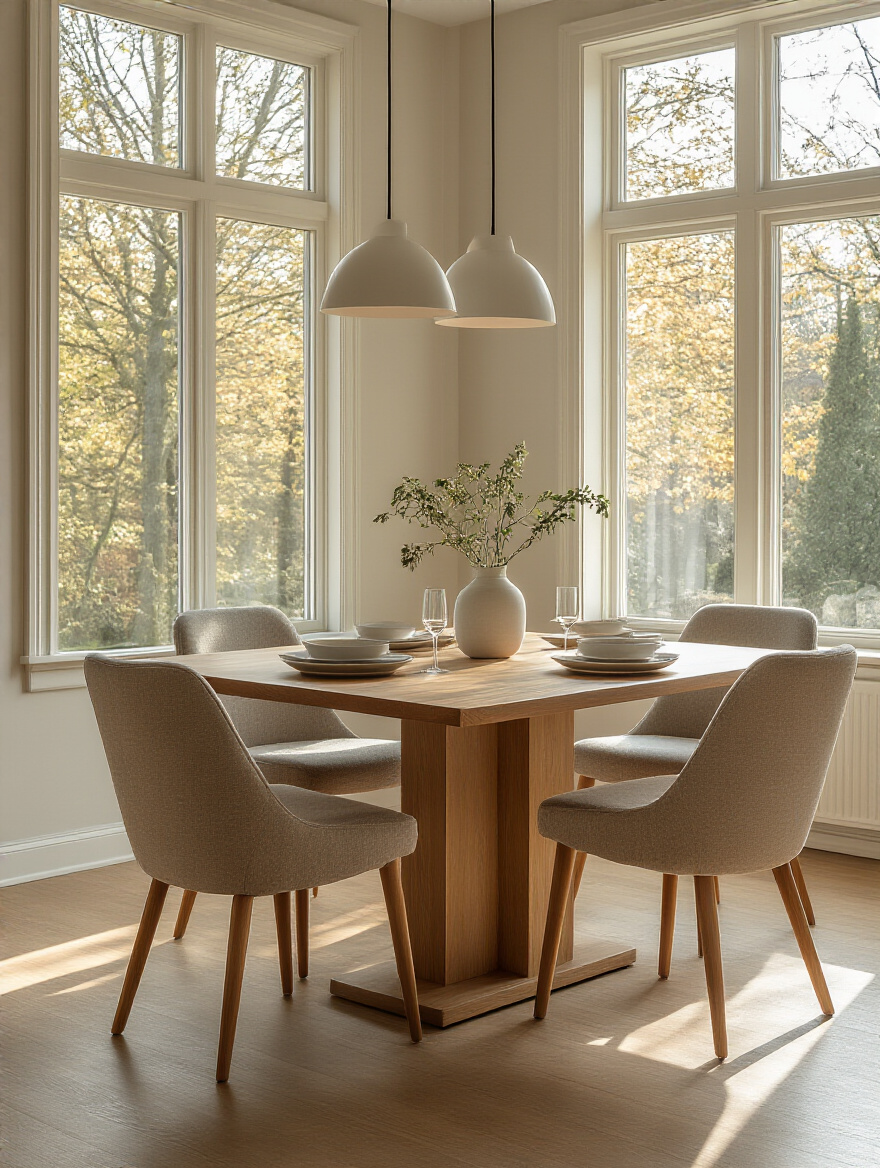
If your table has a deep apron and your chairs have arms, you can run into a situation where the arms don’t fit under the table. It’s infuriating. This is why you must, if at all possible, test your intended chairs with the table before you buy. If you’re buying online, measure everything three times: table height, apron height, chair seat height, and chair arm height. It feels like a lot of work, but it prevents that awful moment when your new furniture arrives and you realize it just doesn’t work together.
Once you’ve confirmed the perfect fit, it’s time to bring it home and put it together.
11. Execute Safe and Efficient Table Assembly and Initial Placement
Please, do not try to be a hero. Most solid wood dining room tables are incredibly heavy. Get a friend to help you. The number one cause of damage to a new table is during assembly and placement. Assemble it on a soft surface like a blanket or the cardboard it came in to avoid scratching the finish before you’ve even used it. Follow the instructions, and don’t overtighten the bolts at first. Get everything loosely connected, then go back and tighten it all down evenly.
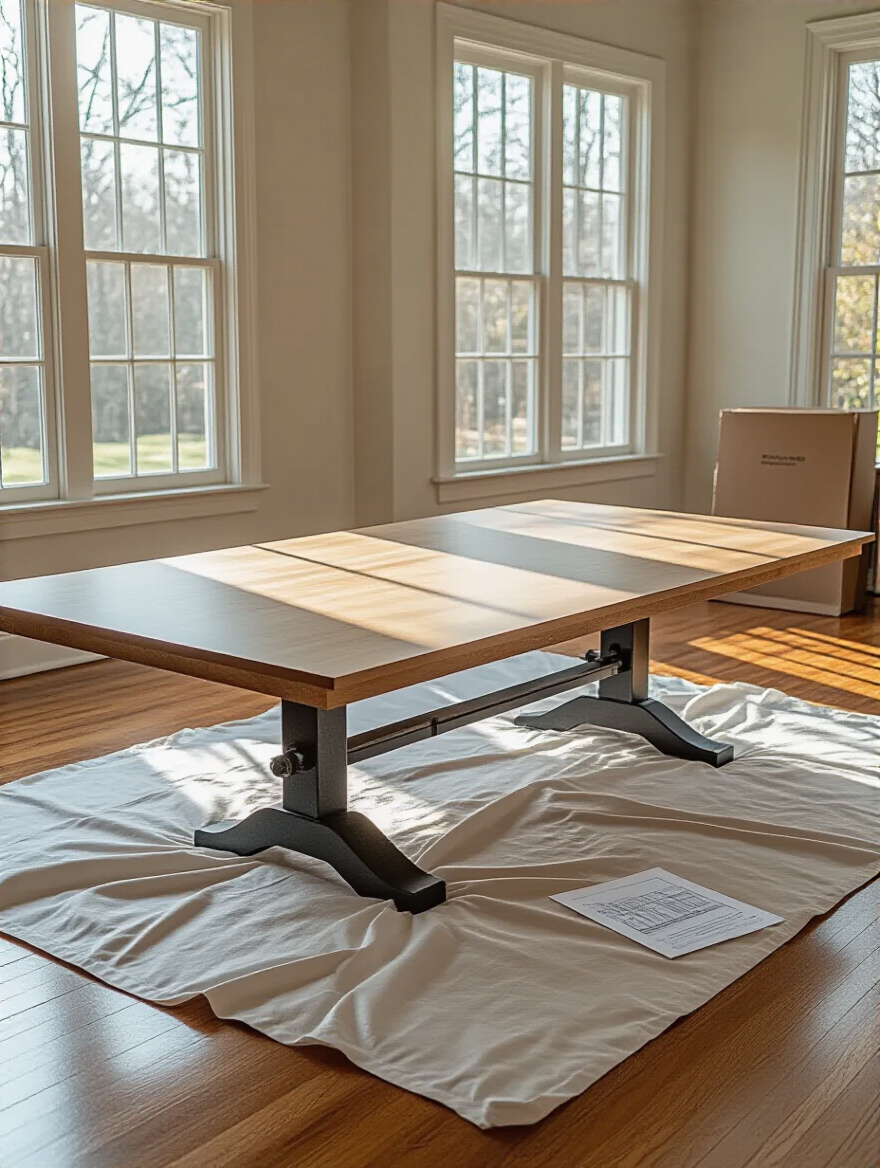
Here’s the pro tip that everyone forgets: after about a week or two of use, go back and re-tighten all the hardware. Wood settles, especially in a new environment, and the joints will loosen slightly. This five-minute check ensures your table remains rock-solid for years to come. And use furniture glides! Felt pads under the legs will protect your historic hardwood floors from getting gouged every time the table is moved an inch.
Your table is now built and in place. The foundation is complete. It’s time to bring it to life with styling.
Elevating the Aesthetic: Styling Your Dining Table for Impact
With the hard work of selection and setup done, we can now focus on the artistry. Styling is what transforms your table from a piece of furniture into a statement. It’s how you infuse your personality and make the space truly your own.
12. Master Centerpiece Design for Seasonal Charm and Focal Point
The biggest mistake people make with centerpieces is going too big. Your centerpiece should facilitate conversation, not block it. The “sightline rule” is key: nothing in the middle of the table should be tall enough to prevent you from making eye contact with the person across from you. Think low and long, not tall and wide. A simple row of small bud vases, a collection of candlesticks, or a beautiful wooden bowl filled with seasonal fruit is often far more elegant and effective than a massive floral arrangement.
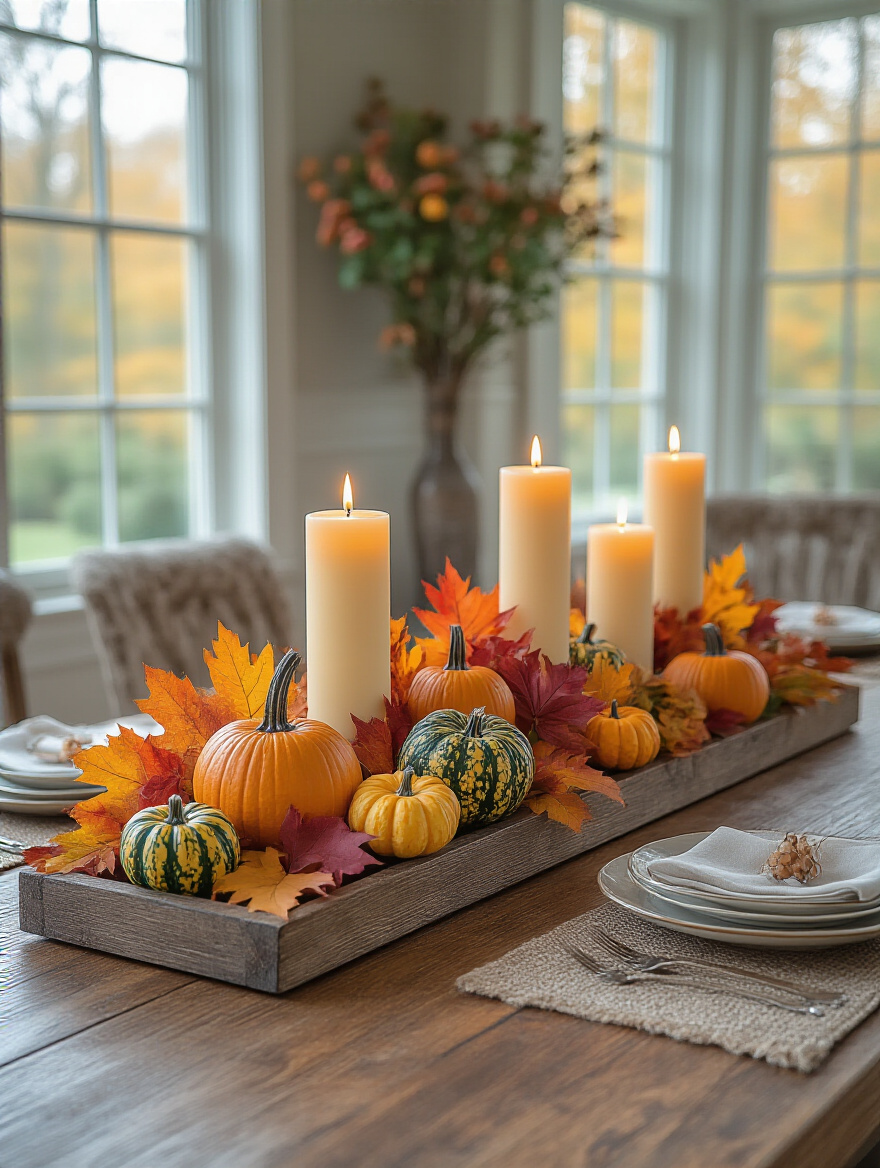
I love using elements from the garden or local market to create a centerpiece that feels alive and connected to the season. In the fall, a branch of autumn leaves in a simple vase with some small gourds is perfect. In the spring, a few cuttings of forsythia or tulips can brighten the entire room. It doesn’t have to be expensive or elaborate. The most compelling centerpieces are often the simplest, reflecting the natural beauty of the world outside your windows.
Centerpieces set the stage, but linens add the essential layers of color and comfort.
13. Utilize Table Linens and Placemats for Added Texture and Color
Linens are the secret weapon of tablescaping. They are the easiest and most affordable way to completely change the mood of your dining room. A crisp white linen tablecloth instantly says “formal” and “special occasion.” A simple, textured runner in a natural fabric like jute or chambray feels casual and inviting. Placemats are fantastic for adding a pop of color and texture while also protecting your table’s surface.
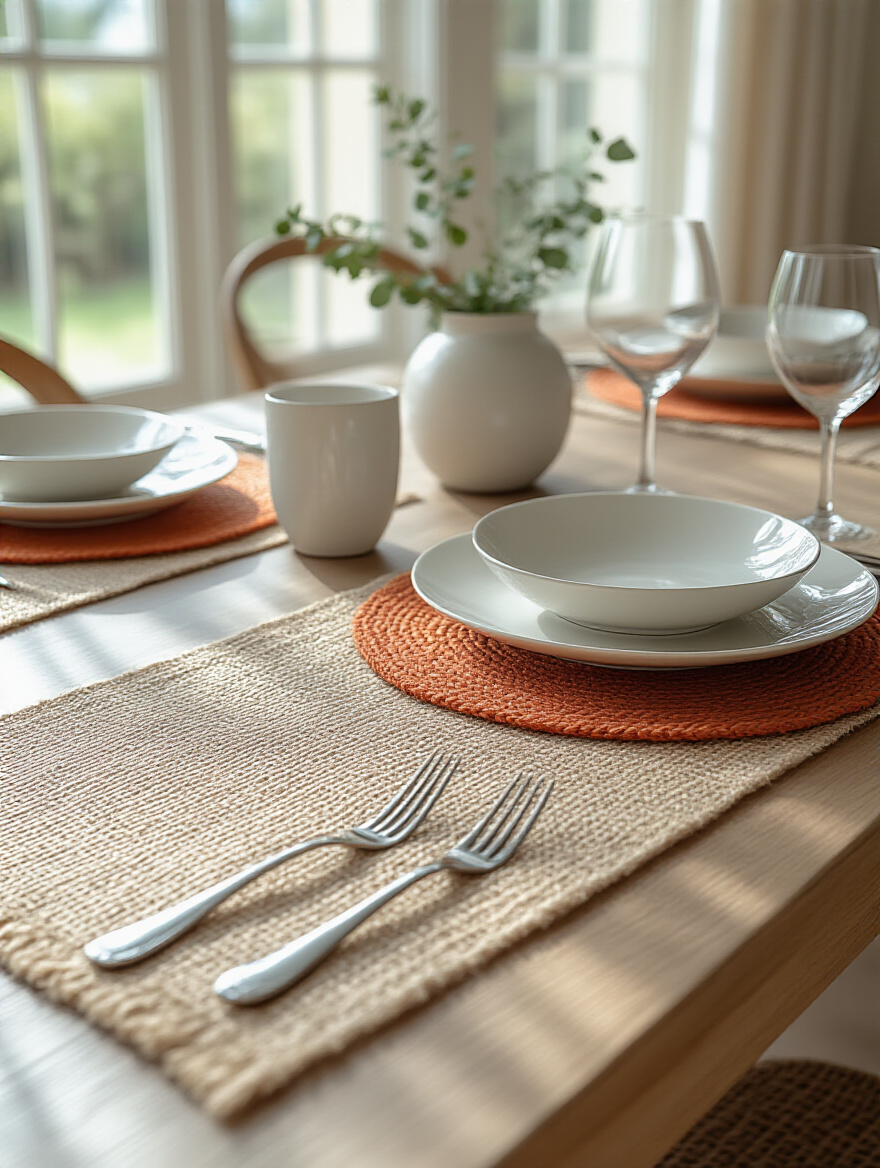
My personal preference for older homes is to invest in high-quality, natural-fiber linens—linen, cotton, even wool. They have a beautiful weight and texture that synthetics just can’t replicate. And don’t be afraid to mix and match. Layering a runner over a tablecloth or using patterned napkins with solid placemats creates a rich, collected look that feels personal and sophisticated. Just ensure there’s a common color thread to tie everything together.
Now, let’s look up and make sure the scene is properly lit.
14. Incorporate Appropriate Lighting Fixtures Above the Table
The lighting over your dining table is the jewelry of the room. It needs to be beautiful, but it also needs to do its job. A chandelier or pendant that is too small will look lost and insignificant, while one that is too large will overwhelm the space. A good shortcut is to choose a fixture that has a diameter of about half to two-thirds the width of your table. This generally keeps it in proper proportion.
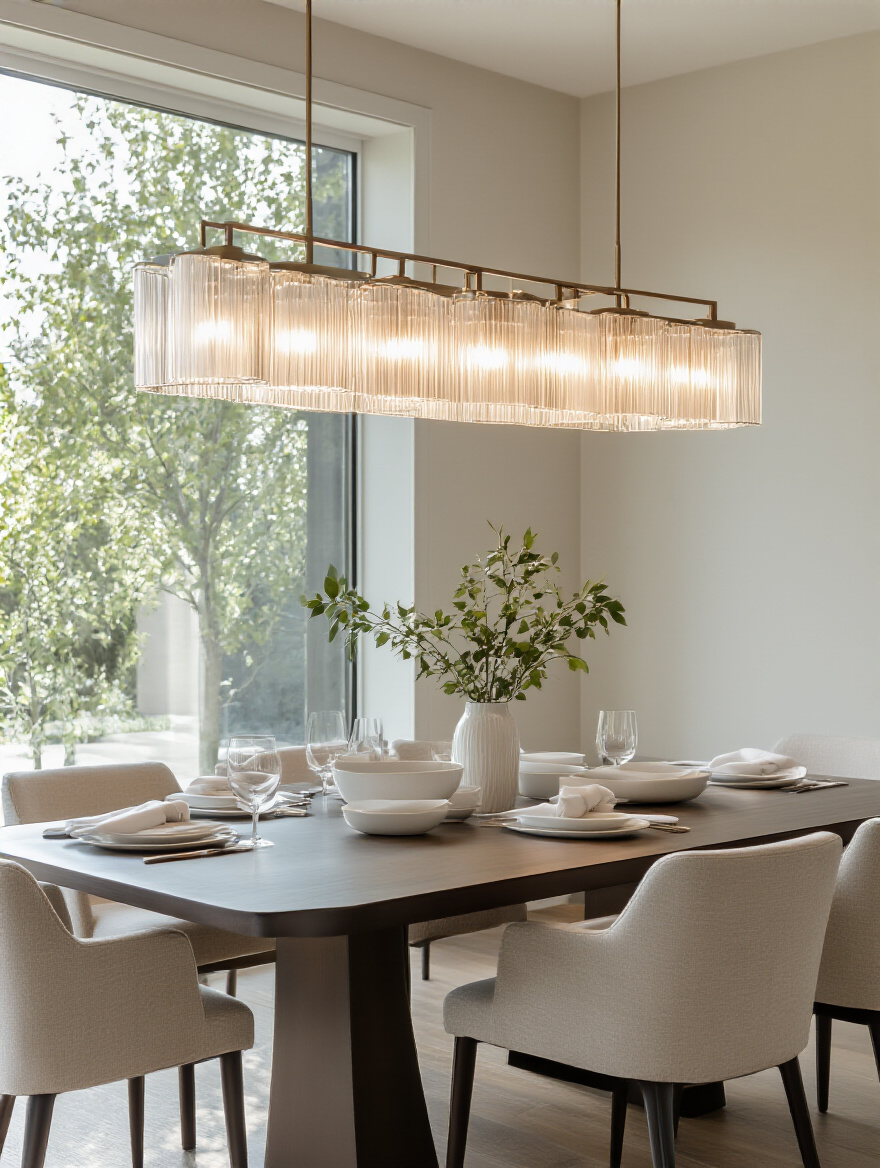
Equally important is the height. The bottom of the fixture should hang about 30 to 36 inches above the tabletop. This illuminates the table beautifully without blinding your guests or getting in their line of sight. And for the love of all that is holy, put it on a dimmer switch. This is non-negotiable. It allows you to have bright light for homework or a game night and a soft, ambient glow for an intimate dinner party. A dimmer is the single most effective tool for controlling the mood of your room.
Finally, we need to frame our beautiful scene with the right backdrop.
15. Integrate Artwork or Wall Decor to Define the Dining Zone
In an older home, the dining room is often a distinct space. But even so, art is what gives it a soul. A large piece of art or a well-curated gallery wall acts as a powerful anchor, visually grounding the table and chairs. As a rule, the art should be centered on the wall it occupies, and the center of the piece should be at average eye level, around 57-60 inches from the floor.
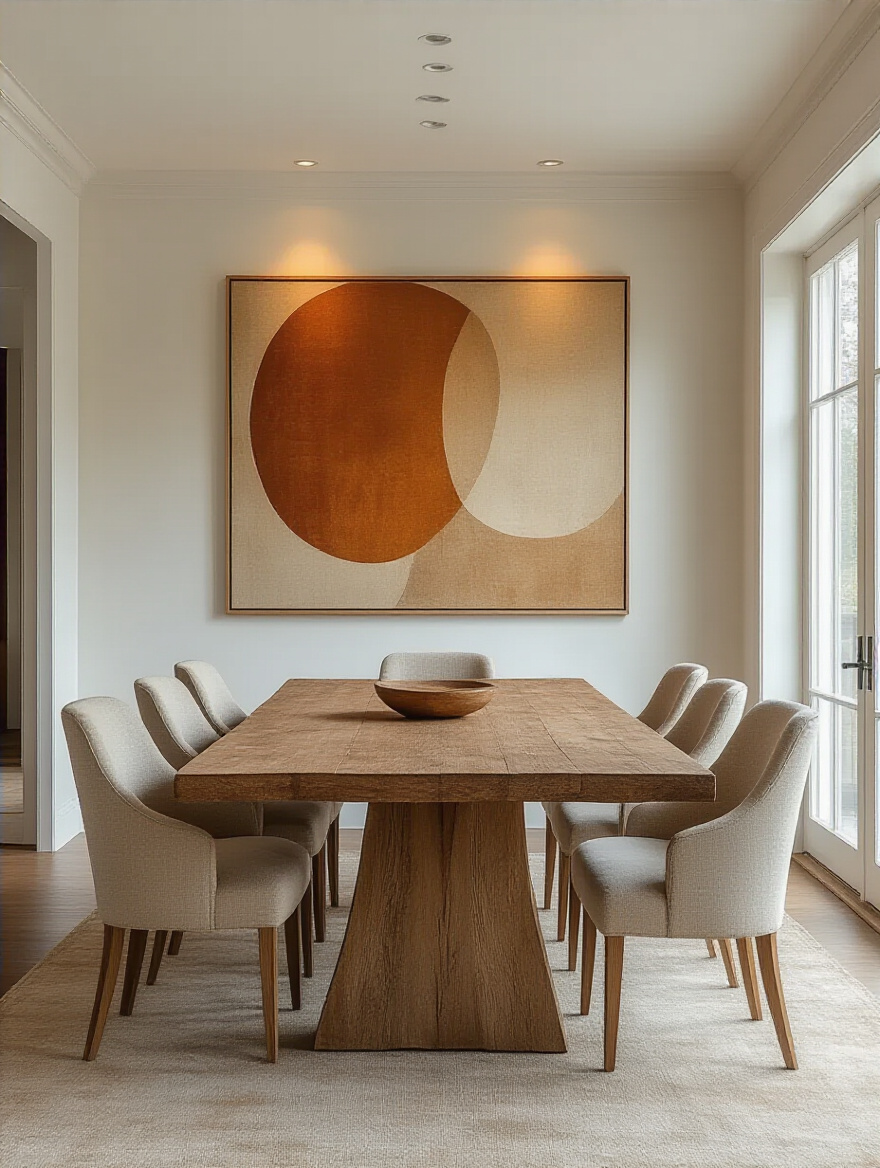
If you’re hanging art above a sideboard or buffet, make sure the bottom of the frame is about 6-8 inches above the furniture’s surface to create a sense of connection. Don’t be afraid of scale. One large, impactful piece is often much better than several small, scattered ones. And a mirror can be a fantastic choice for a dining room. Placed opposite a window, it can bounce light around the room and make the space feel larger and brighter, while also reflecting the warm glow of your light fixture in the evening.
Your table is chosen, placed, and beautifully styled. Now comes the most important job: protecting your investment for a lifetime.
Sustaining Your Investment: Long-Term Care and Optimization
You’ve done all the hard work to choose the perfect piece. This final section is about stewardship. A good dining table is an investment that should last for generations, but it requires consistent, thoughtful care. These are not chores; they are rituals that preserve the history and beauty of your home’s new heart.
16. Implement Daily Cleaning Routines Based on Material Type
Stop using that all-purpose kitchen spray on your wood table. Just stop. Most of those cleaners contain harsh chemicals that can strip the finish over time, leaving it dull and vulnerable. For a sealed wood table, all you need for daily cleaning is a soft cloth lightly dampened with water. For tougher spots, a mild solution of soap (like a drop of Dawn in a bowl of water) is all you need. Always wipe in the direction of the wood grain and dry it immediately with a second cloth.
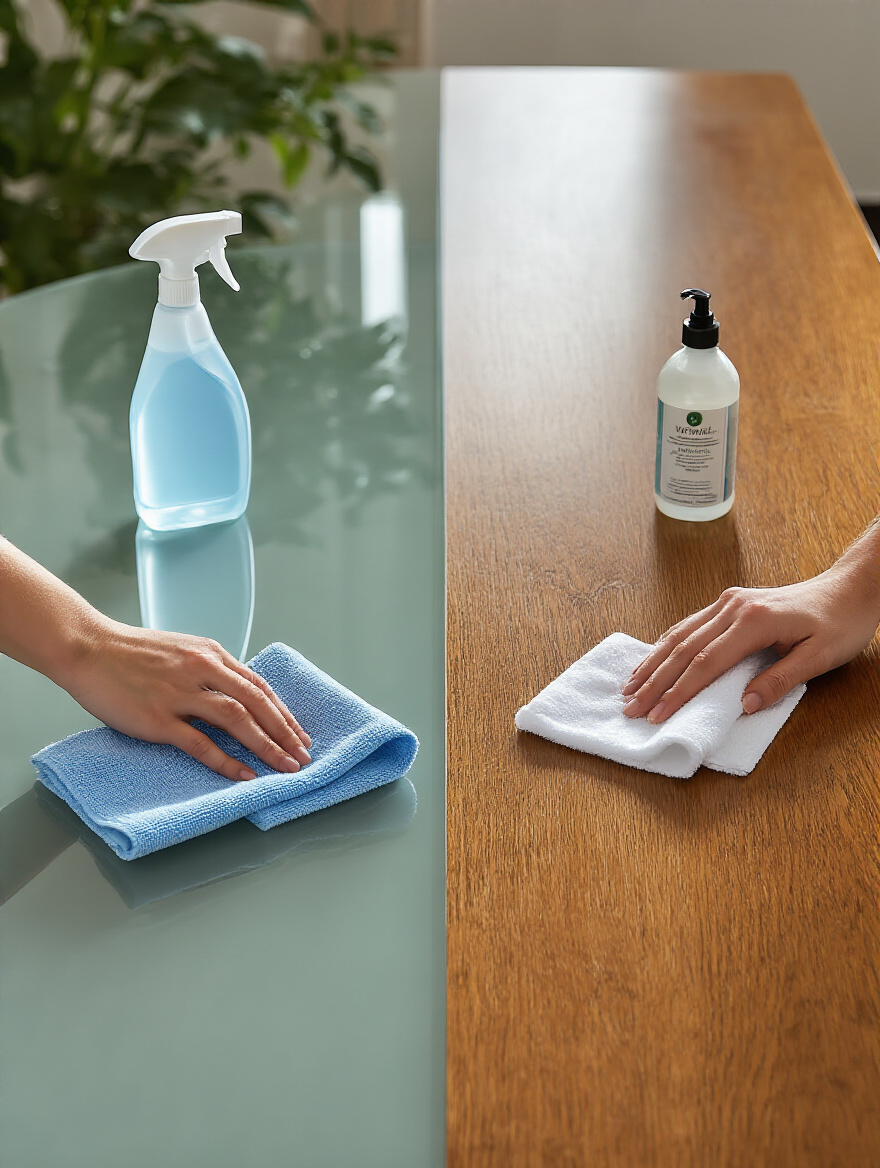
The key is to match your cleaning method to your material. Glass can take a standard glass cleaner. Marble needs a special pH-neutral stone cleaner to prevent etching. My best advice is to create a small “spill kit” that you keep in a nearby drawer: a couple of microfiber cloths, a small bottle of your material-specific cleaner, and some coasters. Quick, gentle action is the best defense against long-term damage.
Prevention, of course, is even better than a cure.
17. Apply Protective Measures Against Scratches and Heat Damage
I know they can feel a bit fussy, but coasters, placemats, and trivets are your table’s best friends. They are the sacrificial lambs that protect your investment from the mortal enemies of a fine finish: heat, moisture, and abrasion. A hot pizza box placed directly on a wood table can leave a permanent milky-white heat stain in seconds. A sweating glass of iced tea can leave a water ring that requires professional repair.
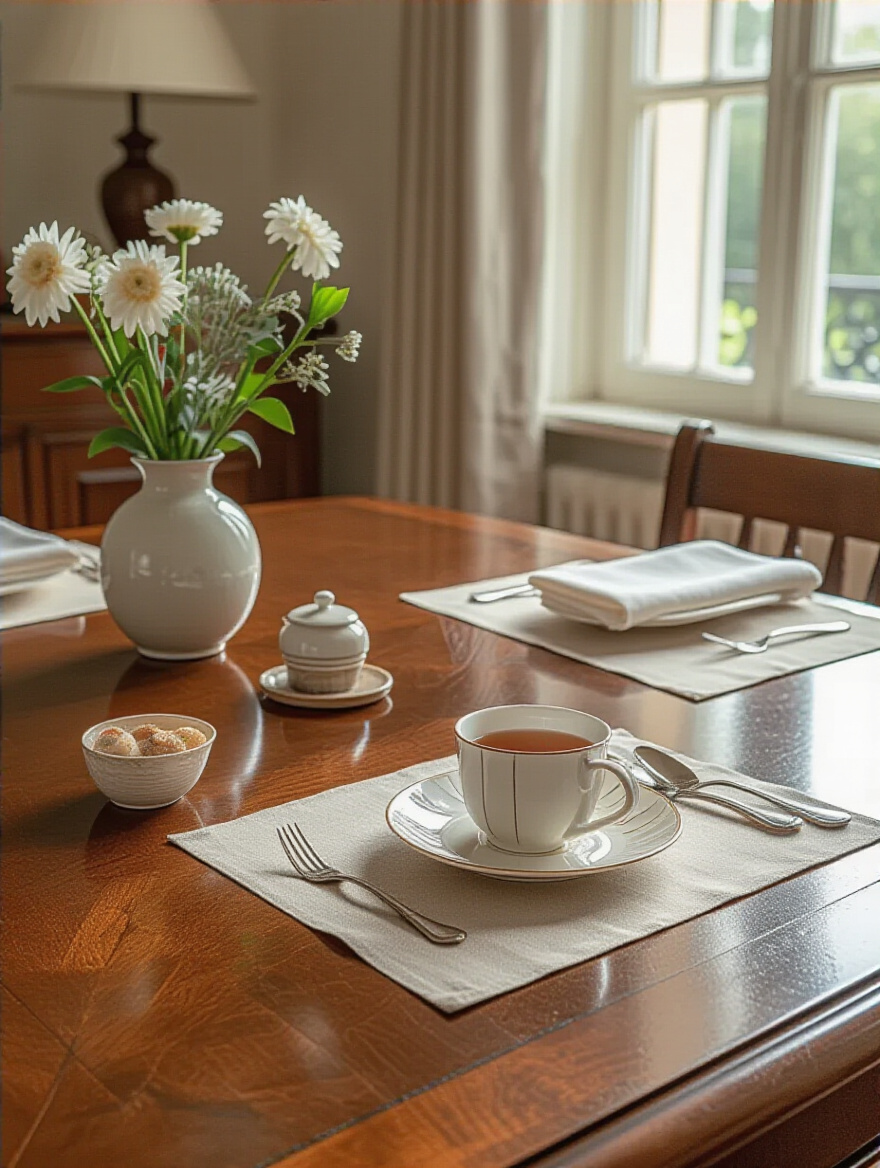
If you have a table you truly cherish, consider investing in a custom table pad. It’s a thick, felt-backed vinyl cover that you can put on under a tablecloth for big family gatherings or when the kids are doing craft projects. It’s not the most elegant thing on its own, but it provides bulletproof protection against spills, heat, and impact. Think of it as insurance for your most-used piece of furniture.
Even with the best care, life happens. Knowing how to handle small accidents is a vital skill.
18. Address Minor Scuffs and Stains Promptly and Effectively
When a small disaster strikes, don’t panic. For minor scuffs on a wood finish, you’d be amazed at what a walnut can do. I know it sounds like an old wives’ tale, but crack open a raw walnut and rub the meat of the nut directly onto the scratch. The oils from the nut will darken and blend the scratch, making it far less visible. It works wonders on small surface blemishes.
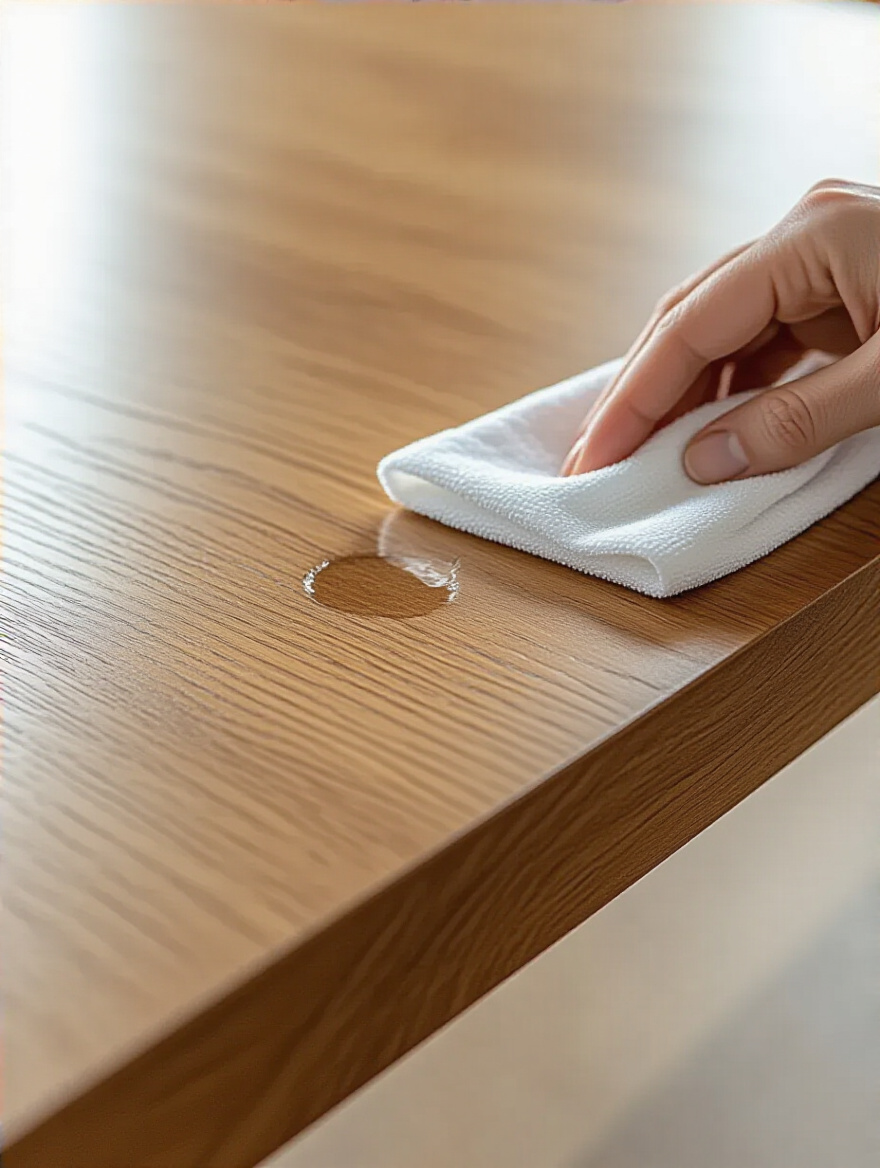
For water rings, prompt action is key. If it’s a fresh ring, sometimes just leaving a dry cloth on it overnight is enough to pull out the moisture. For more stubborn white rings, a small amount of non-gel toothpaste or mayonnaise on a soft cloth, rubbed gently in the direction of the grain, can sometimes lift the stain. Just be sure to test any remedy on an inconspicuous spot first, like the underside of the table.
Finally, there’s one simple task that ensures your table will remain stable and strong for the long haul.
19. Periodically Inspect and Tighten Table Hardware for Stability
Remember when I said to re-tighten the hardware after a week? Well, you need to make that a regular ritual. Every six months or so, take five minutes to check all the bolts on the legs and apron. Wood expands and contracts with changes in temperature and humidity, which can cause hardware to loosen over time. A slightly wobbly leg isn’t just annoying; it puts stress on the joints and can lead to serious structural damage down the road.
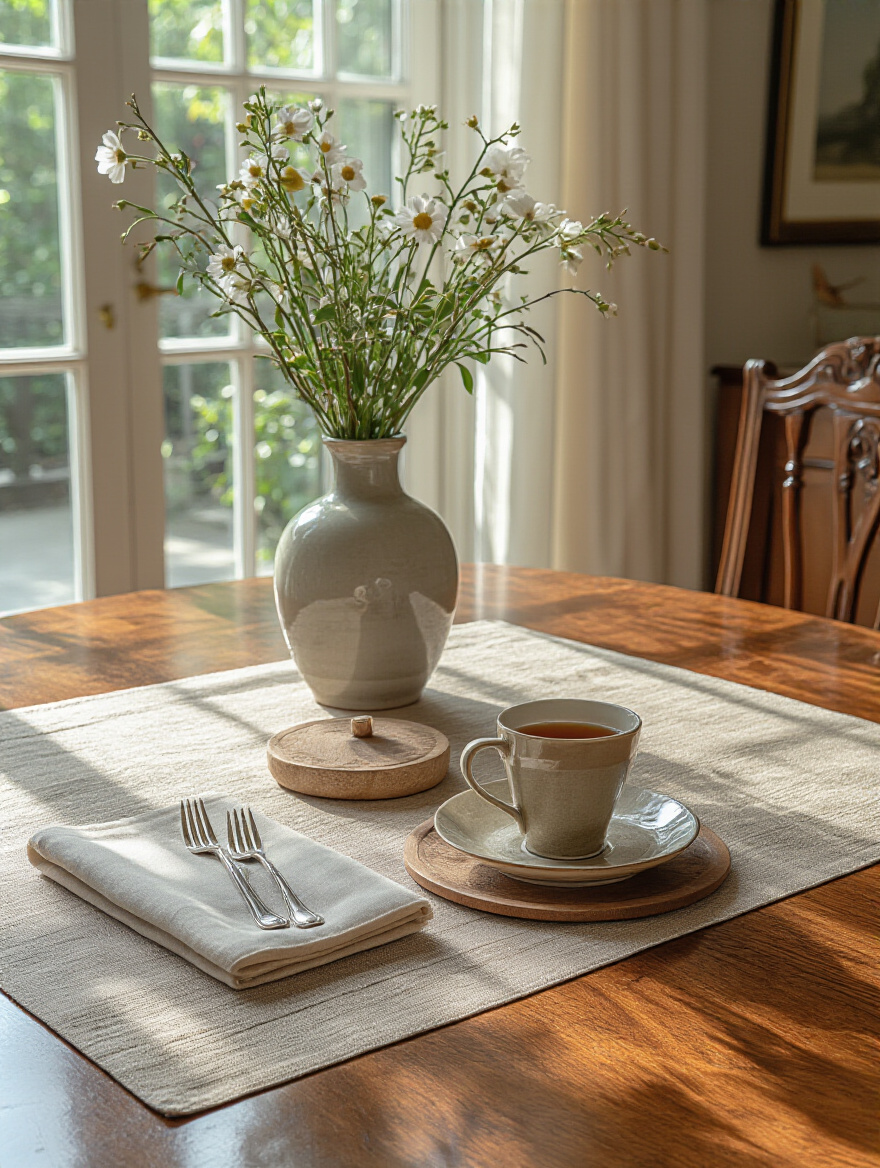
This is especially critical for extension tables with more complex mechanisms. Keeping everything snug and secure is the single best thing you can do to prevent costly repairs and ensure your table remains a safe and stable centerpiece for your family. It’s a simple act of maintenance that pays huge dividends in longevity and peace of mind.
Conclusion
Choosing a dining room table for a home with history is about more than just filling a space. It’s about finding a piece with its own character that honors the soul of the house. It’s an act of stewardship. By focusing first on the unglamorous work—the measuring, the budgeting, the honest assessment of your lifestyle—you lay the groundwork for a decision you’ll love for decades. You move beyond fleeting trends and choose something with integrity, function, and enduring beauty.
This table will become a silent witness to your life, absorbing the stories, the laughter, and the memories you create around it. Treat it with care, and it will serve your family not just for a lifetime, but for generations to come—a true heirloom in the heart of your home.
